
by Dr. Talia Marcheggiani, ND | Jan 18, 2022 | Autoimmune, Culture, Depression, Diagnostics, Endocrinology, Health, Hormones, Medicine, Mental Health, Naturopathic Philosophy
Brett Weinstein and Heather Heying have a t-shirt that says “Welcome to Complex Systems” on it.
Indeed.
Many patients and biological reductionism want to know what caused my anxiety, depression, hormonal issues, and autoimmune disease? What did I do wrong, or that went wrong for me? What was the food I failed to eat, the ingredient I was missing or the thing that caused the house of cards that represented my health to topple?
I think it’s appropriate to answer, “welcome to complex systems.”
Like everything else in nature, your body, your mental health is a complex system. This means that it consists of many factors, many of which have yet to be identified, virtually all that have yet to be correctly understood, that drive its function—even seeing health as an absence of disease, which is essentially how our medical system is organized, is a product of biological reductionism. Biological (or rather mechanical reductionism), the attempt to identify the loose screw or the spring that’s out of place, works for your car, but it doesn’t work for your brain, body, mental or physical health.
Understanding health might be better done using the Biopsychosocial Model, a framework for understanding where we sit today in terms of our health from the context of our biology, psychology, and social environment. Further, the biology part of the biopsychosocial factors that drive our health can be considered triggers and drivers rather than cause and effect.
Say you are feeling terrible. You’re feeling exhausted and agitated, and you’re constipated, and your hair is falling out. You see your doctor, and they tell you everything is great. You push for some bloodwork. Your doctor says your thyroid is slightly off, but it’s likely nothing.
So you take the bloodwork to your naturopathic doctor, who tells you your stimulating thyroid hormone, or TSH, is out of range, indicating that your thyroid seems to be under-functioning. They order more testing to understand what else lies under the hood and find your anti-thyroid antibodies are sky-high. It turns out you might have Hashimoto’s thyroiditis or a condition of under-functioning thyroid driven by autoimmunity.
You also have celiac and a family history of multiple sclerosis, thyroid issues, and other autoimmune diseases. How did this happen?
For months you were dealing with a ton of stress. You also haven’t been eating the greatest. But you haven’t been sleeping well either, and it’s hard to eat well when you’re so darn tired. You’ve been working a lot, dealing with a global pandemic and all, and things haven’t been great. But this is compounded by the fact that you’re not feeling great, which makes it harder to deal with the stress, making the condition worse–a vicious cycle.
At least now you know that something is going on, and it’s not all in your head, but what caused this?
We want to know the exact cause of something to find the specific treatment. This is biological reductionism. Something is missing; we’ve identified the thing, so here’s the magic bullet that will target the exact issue and either replace it or weed it out.
The problem with complex systems is that when we pull one thread on this ball of yarn that is your health, a knot gets tightened somewhere else. Like the post on Chesterton’s fence, complex systems are difficult to understand. So we must assume we don’t fully understand them, and therefore I believe we should exercise humility when it comes to tugging on pieces of yarn that comprise the whole operation.
For example, the side effects of drugs aren’t side effects; they’re effects. Some of these effects are wanted. But all the other effects that happen, such as weight gain, agitation, or migraines from anti-anxiety medication, are unwanted. And they are still effects of the drug. Side effects of drugs are indications that we have failed to understand the implications of messing with complex systems entirely.
Sometimes this might be warranted. The system might be so far out of bounds that it could kill you unless we intervene. Sometimes the drug is more specific–if you don’t have a thyroid, you need thyroid hormone. However, does the thyroid have a role beyond simply producing T4 (thyroid medication)? While thyroid hormone medication might be indicated or necessary, is it fully completing the thyroid’s function in the complex system? What about T3? (or T1 and T2)? What about iodine? What about the driver contributing to thyroid dysfunction? Is it still driving disease? Might it start to create other symptoms elsewhere in the body?
In other words, have we entirely dealt with the problem when we reduce thyroid dysfunction down to deficiency of a single hormone?
So, I explain to my patient; there isn’t a cause of autoimmune disease or a thyroid condition. There are drivers, such as chronic inflammation (which might be triggered by a specific food your immune system doesn’t like). There might be a driver like chronic stress triggered by a more stressful event. Genes can be drivers or susceptibilities triggered by environmental factors, such as nutrient deficiencies. So, it’s not gluten that caused your thyroid issue, but it might start or drive immune system overactivation and chronic inflammation, contributing to the problem.
So what does this mean for treatment? It means we need to look at the ball of yarn respectfully. We need to appreciate how many symptoms are a healthy response and compensation by the body. If we randomly attack a symptom like fatigue with a stimulant, we might further drive the inflammation, nutrient deficiencies, or stress that underly that symptom. We need to understand what the body lacks (what’s it deficient in?) and when it might have too many environmental toxins, allergens, chronic stress, blue light, etc.
We need to look at the system and help it re-establish its equilibrium. Cleaning up garbage in a pond is likely a good idea–it probably shouldn’t be there in the first place. The pond didn’t create the trash. But what about something else we don’t want, like an algae overgrowth? But if we throw an algaecide in the water, what unseen harm might we be doing to the pond’s ecosystem if we mess with it? Has the pond created algae for the reason that currently escapes us, but wouldn’t if we looked a little deeper?
Why doesn’t our modern medical model treat our bodies as complex systems? I’m not sure. A few guesses, though. Complex systems are complicated, if not impossible, to understand. They require time to unravel. They need patience and education. They require effort on the part of the patient to try to shift their environment to eliminate or adjust possible triggers. They are impossibly hard to market and profit from.
Getting our concept of a complex system “right” can take time. It might take trial and error, collecting information, curiosity, and a willingness to try. It might take admitting that our culture has many aspects to it that are inherently unhealthy.
We might have to find a mini culture where people get sun, eat well, move, and sleep early to support our health. We might have to be “stricter” than the people around us. These people may have similar drivers working below the surface, but their symptoms may look different. They do not display symptoms like fatigue or anxiety until their systems have completely shifted beyond balance.
We are all a manifestation of complex systems. Laini Taylor says, “Inside each of us, there is a world that no one else can ever know or see or visit.”
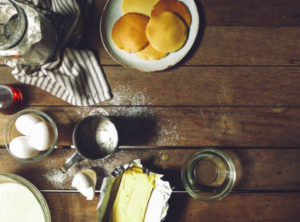
by Dr. Talia Marcheggiani, ND | Jun 29, 2017 | Culture, Digestion, Elimination Diet, Evidence Based Medicine, Food, Health, Mind Body Medicine, Nutrition, Science, Therapeutic Diets
A naturopathic doctor offers tips for navigating the often contradictory and confusing world of modern human nutrition.
 As soon as we start to feel comfortable with our grasp of human nutrition—which foods are healthy, which ones are unhealthy, and how to eat a balanced diet for optimal health—a new study gets published that shatters our once-felt sense of confidence.
As soon as we start to feel comfortable with our grasp of human nutrition—which foods are healthy, which ones are unhealthy, and how to eat a balanced diet for optimal health—a new study gets published that shatters our once-felt sense of confidence.
Confusingly contradictory health claims constantly appear in the news, like the American Heart Association’s vilification of coconut oil. The vegan diet-promoting documentary What the Health, currently trending on Netflix, turns convention on it head by assuaging our fears of refined sugar, instead blaming animal protein, eggs and dairy for the worldwide diabetes epidemic. Even I find myself doubting the 15 years I’ve spent studying and working in the field of human health every time paradoxical nutritional data is uncovered.
When I was in high school, I remember patting myself on the back for choosing fat-free options, hoping the leanness of my food would encourage leanness of my flesh. I gave up meat, understanding that I was making a healthier choice; I was told that meat, fat and cholesterol were all culprits of heart disease. I tried giving up eggs and dairy, trying on veganism in order to minimize my impact on the environment. I did an elimination diet while at naturopathic medical school, removing gluten. When my colleagues started reading about the Paleo Diet—grains were the enemy all along, while meat was good for us—I slowly began to embrace a “primal” diet. I started removing myself from the influence of decades’ worth of poorly conducted research and began welcoming saturated fat back into my life. Fat was fine; it was carbs that were the root of all disease. Atkins had gotten it right from the beginning. Eventually I cut out all carbs and sugar and tried a ketogenic diet, eating lots of fat, moderate amounts of meat, and some vegetables.
My journey brings me here, to my Facebook newsfeed, which has been infiltrated with articles condemning coconut oil and saturated fat for raising LDL cholesterol and contributing to cardiovascular disease. “But I thought it was healthy!” Friends, family and patients cry, tearing their hair out in confusion over the news. Some patients have watched Netflix’s What the Health, a documentary from the makers of Cowspiracy, which asserts that sugar’s link to type II diabetes may not bas as strong as previously thought.
The flip-flopping is frustrating for sure, especially for those of us who are committed to living healthy lives for as long as possible. But before we toss our tubs of coconut oil and liquid stevia drops in the garbage and start pulling out the white sugar and margarine again, we should consider how nutritional research is conducted. Let’s entertain different traditional, holistic viewpoints on food and nutrition in order to learn how to feed our bodies optimally.
The Problem with Nutritional Research
There are several problems with how we study nutrition. One of the challenges lies within science itself; scientific studies, by their very nature, attempt to isolate all of life’s complexity down to two variables in order to study them while nutrition, as it’s practised in the day to day lives of human beings, consists of an infinite number of important factors that are often not taken into account.
Most human diet studies are epidemiological. Researchers follow populations of people for years, tracking what they eat and noting how many diseases they get over time. They then synthesize the data to create story. For instance, how much fibre did the people who had heart disease eat? Did those who avoided gluten have a higher risk of diabetes?
In order to assess dietary intake, most epidemiological studies use Food Frequency Questionnaires, or FFQs. Study participants are asked how often they eat certain foods (such as chicken) per week. They are asked to check a box, from “none” to “more than 6 times a week”. As a clinician interested in how my patients’ nutrition may be affecting their health, I assess diet in a few different ways. In the initial appointment, I ask my patients to recall everything they’ve consumed in the past 24 hours to get a rough overview of how they typically eat. Then, between the first and second appointments, I have my patients track their foods in a diet diary over the course of one to two weeks. The accuracy with which my patients report their food intake from the day before depends on their memories, perceptions, and diligence in recording, among other things, and this can compare drastically with their diet diaries that are recorded in real time. Not only do the mundane memories of daily meals evade us, we are often found guilty of deceiving ourselves based on how we feel we should be eating, rather than how we actually are. I find it hard to believe that participants are filling out FFQs accurately.
Also, the stories that epidemiological studies create from the data establish correlation, not causation. With many correlations (like one of my favourites: ice cream consumption and drowning—both occur in summer) there is often no direct relationship. If assessing the connection between fat intake and diabetes, a good study will take into account all meaningful variables, such as how often the participants exercised, or whether they had existing cardiovascular disease. However, considering all the possible factors that might effect the relationship is virtually impossible. For instance, what was the status of the gut flora of the participants? What was their antioxidant or mineral status; were they magnesium deficient? Were they consuming meat that was pasture-raised or corn-fed? How high was their daily toxic exposure? Did they experience chronic stress? How well were they sleeping? What were their levels of inflammation like? And so on.
The trouble with studying nutrition and disease is that, when it comes to health, context matters; context may be all that matters. For instance, while we know that barbecued meat can produce carcinogens that potentially lead to cancer, a study found that when the meats were seasoned with rosemary the carcinogenic load of the meat was neutralized. It’s nearly impossible to form a complete picture when we insist on studying isolated factors, leaving out many important details.
Animal studies, while allowing for tighter control (we don’t ask mice to report their diets, we just feed them), are also flawed. Firstly, mice and humans are completely different species with different nutrient requirements. However, animal study designs can also be problematic. Animals are given lard and white sugar to assess the effects of a high fat, high sugar diet on their health—their diets are exaggerated for the purpose of the study. Human beings, however, eat burgers, cake, and ice cream. We don’t eat single nutrients like fat and sugar, we eat food. If a mouse gets sick on a diet of lard and table sugar is it because of the foods it was eating, something he wasn’t eating, or some other unforeseen factor? There may be a huge difference between eating a high-fat diet with no vitamins and minerals, and eating a high-fat diet that contains complete nutrition.
A third method for studying human nutrition is through randomized control trials, or RCTs. In RCTs humans are randomized into a group that receives an intervention, like a dietary plan, or a control group that is told to follow some other diet or just eat normally. These trials control as many variables as possible, but the timeframe for these studies is often too short to garner meaningful information about health outcomes, which may take years to manifest. It is also difficult to get participants to stick to meal plans. Further, it’s hard to establish consensus for each diet being studied. For example, when assessing the nutritional merits of the Paleo diet, how many servings of vegetables should participants be told to consume? How many grams of fat? What types of fat?
It’s important that we can use studies to seek answers to our questions about the relationship between nutrition and health. However, due to its many limitations, nutritional research can only take us so far. This is why one study may indicate that high sugar diets contribute to diabetes risk, while another study finds no relationship.
A New Food Guide
If we can’t trust research studies to tell us what to eat, who do we trust? Surely we can’t rely on Canada’s Food Guide, with it’s outdated recommendations that simultaneously overemphasize grains and dairy, while continuing to uphold archaic views on fat. Primarily created in the 40’s to help Canadian families ration their food during the war, the Food Guide was not necessarily created to promote the optimal health of those who follow it.
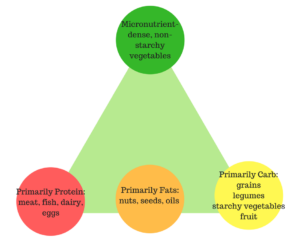 Dr. Ray Cronise, a former NASA scientist, outlines a food pyramid in his paper to help organize food into nutrient content. I often borrow his pyramid to depict nutritional balance to my patients.
Dr. Ray Cronise, a former NASA scientist, outlines a food pyramid in his paper to help organize food into nutrient content. I often borrow his pyramid to depict nutritional balance to my patients.
Ray’s pyramid is composed of four circles, three that form the base of the pyramid, forming the three main groups of macronutrients: protein, fat, and carbohydrates, and foods that are composed primarily of each. The circle at the top represents the foods that contain a higher number of micronutrients: vitamins and minerals, which are mainly non-starchy vegetables like leafy greens.
Protein-rich foods include meat and animal products, including fish, eggs and dairy. Fat-rich foods include nuts, seeds and oils like coconut oil, avocado and olives. Carbohydrate-rich foods include starchy vegetables like potatoes, grains, legumes and fruit. Ray concedes, however, that none of these foods are composed of a single macronutrient; animal products often contain a significant amount of fat; nuts and seeds also contain protein and carbohydrates; and legumes and grains contain some protein as well.
Ray points out that most diets, particularly the Standard American Diet, is bottom-heavy. North Americans generally over-consume macronutrient-rich foods that are higher in fats, carbs, proteins, and calories in general, and under-consume micronutrient-rich foods like fruits and vegetables. Because of this, North Americans consistently fail to meet the levels of vitamins, minerals and antioxidants essential for optimal bodily function.
It seems that even “healthy” diets tend to focus on the bottom of the pyramid, restricting certain groups of foods while making up the balance by over-emphasizing others. Paleo and low-carb dieters often fixate on the right side of the pyramid, including animal products, nuts and seeds, but avoiding grains and legumes, while vegan and vegetarian diets concentrate on the left side of the pyramid, eschewing all animal products and getting protein from grains, legumes and nuts instead.
One thing all healthy diets seem to emphasize, however, is fruit and vegetable consumption. When studying the merits of a vegan or paleo diet, it is the non-starchy, micronutrient-rich vegetables that may confer most of the health benefits, regardless of the carb, fat and protein content. Therefore, Ray recommends focusing on the top of his food pyramid, eating as many vegetables as possible, while eating a balance of foods from the base.
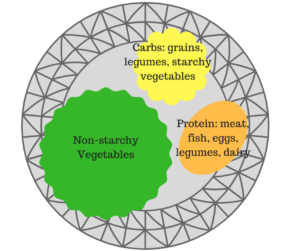 Since we rarely eat pyramids, I often depict this balance for my patients using a plate. I divide the plate into four quarters. One half of the plate is dedicated to colourful vegetables, with at least a full quarter dedicated to greens. The other two quarters of the plate are divided into starches: grains, legumes, tuberous vegetables, and proteins: meat, dairy, eggs, fish, or legumes. Oils and fats can be used to cook with or added to the meal in the form of avocados, nuts and seeds.
Since we rarely eat pyramids, I often depict this balance for my patients using a plate. I divide the plate into four quarters. One half of the plate is dedicated to colourful vegetables, with at least a full quarter dedicated to greens. The other two quarters of the plate are divided into starches: grains, legumes, tuberous vegetables, and proteins: meat, dairy, eggs, fish, or legumes. Oils and fats can be used to cook with or added to the meal in the form of avocados, nuts and seeds.
Listening to the Body as Guide
So, while Ray’s advice to eat as many green and colourful vegetable as we can while eating a balance of the foods at the bottom of the pyramid is sound, how can we establish what the right balance is for us? Many of us will have vastly different requirements for the macronutrients: carbs, fat and protein. My body has an energy demand that is different from that of my 6′ friend who lifts weights daily, or my 90-year old hypertensive, mainly sedentary Italian grandmother. As a naturopathic doctor, who believes in an individualized approach to health, I tend to reject top-down dietary recommendations that ignore the variabilities among people.
A friend of mine, having damaged his health through a string of restrictive dieting, argues that all food—even refined sugar and saturated fat—has a place in a healthy diet. He believes our bodies are designed to crave fat, protein and carbohydrates in ratios that promote optimal health. He writes in his book that we can eat whatever we want as long as we eat intuitively and avoid foods laden with “fake” flavours and processed oils, like corn oil, that confuse our internal cues and hunger signals. He also argues, like the filmmakers in the Netflix documentary, What the Health, that there is no evidence that refined sugar causes diabetes, and that diets based on avoidance of certain foods are detrimental for health.
While I’m not convinced that refined sugar deserves to be completely cleared of all charges, I agree that mindful and intuitive eating may be the key to maintaining balance. Healing with Whole Foods by Paul Pitchford places awareness and physical activity at the base of its Integrative Food Pyramid. The idea is that we need to first establish the foundations of movement and mindfulness before we begin to talk about food intake. As my friend says, perhaps the key is tuning in to our own internal physiological and emotional cues through mindfulness, paying attention to hunger and cravings, rather than measuring calories, carbs, protein, or fat grams.
Following our internal cues may be difficult, as the book The Dorito Affect outlines. The author points out how certain foods are engineered to override our hunger and satiation signals and monopolize our cravings, leading us to overeat. Therefore, if we’re going to follow our body’s signalling, mindfulness is a requirement, but so is following the advice of Michael Pollen, author of The Omnivore’s Dilemma, who famously tells us to “Eat food. Not too much. Mostly Plants.”
Pollen urges us to stick to foods that resemble something we might encounter in nature: eat foods our grandmothers would recognize; purchase foods that come from a plant, not foods that are made in one; and to stick to whole foods or packaged foods with five listed ingredients or less. Pollen also encourages us to cook and prepare as much of our own foods as possible. Do you have a craving for potato chips, ice cream, or dark chocolate? Feel free to indulge, as long as you make it yourself using the raw, natural ingredients. The theory is that, when the body is given clean, whole food, it regulates its hunger and satiety signals to communicate to you exactly what it needs.
Heal the Individual
When it comes to whole foods, I believe that there are no “good” or “bad” foods, generally speaking. Observational studies that examine how traditional societies ate suggest to us that saturated fat, animal protein, dietary cholesterol, and carbohydrates all have a place in a balanced diet. However, when it comes to diet, especially therapeutic diets, it’s my job to consider the individual and their health context: there are no good or bad foods, but some foods are better or worse for certain people, and some may even be better or worse for certain people at certain points along their health journeys.
When I am helping my patients calm inflammation, heal their digestive systems, clear their skin, or manage autoimmune disease, I often recommend identifying food sensitivities and eliminating those foods from the diet. Oftentimes these foods need to removed only temporarily, but sometimes foods may need to be removed indefinitely. Patients with insulin resistance, such as in the cases of obesity, PCOS, diabetes or metabolic syndrome, often do well on a low-carbohydrate diet to restore insulin sensitivity. Again, these anti-inflammatory, reduced-carbohydrate diets may only be required until hormonal balance is restored. Older adults concerned with promoting longevity, or patients undergoing cancer treatment, may do better restricting protein to lower their levels of growth factors, while athletes and stressed out adults may require higher amounts of protein to promote muscle building, or to synthesize mood-regulating neuro-chemicals. A woman who is stressed, depressed, exhausted and iron deficient may feel much better increasing her dietary intake of red meat to help regulate her nervous system. Another woman, with a family history of colon cancer, may do better avoiding it.
Endless factors need to be taken into account when we consider which dietary style is right for us. Our health goals, health status, nutrient status, digestive system health, immune system health, liver functioning, insulin sensitivity and hormone balance, levels of stress, toxic load and inflammation are just some of the things that I consider when making lifestyle recommendations for my patients. Lifestyle preferences, tradition, culture, religious backgrounds, cooking abilities, time constraints, and other factors, will also all play a role in our food choices and eating habits.
Our emotional connection to food and our ethics also matter. While veganism is certainly not a diet I recommend, if consuming animal products is out of line with one’s morals, then following a vegan diet may be the healthiest way for them to live in accordance his or her beliefs. Similarly, someone with a history of disordered eating may need to lift all food limitations, even junk food, in order to heal his or her relationship with food and hunger.
Investigations into the eating patterns of traditional societies tell us that human beings thrive on a variety of different diets. Optimizing diet for the individual goes beyond following the latest research or government and industry-funded health recommendations. It involves eating a variety of natural, whole foods, learning to pay attention to the body’s hunger signals, and even working with a health professional who uses diet to help promote health and manage disease on an individual level.
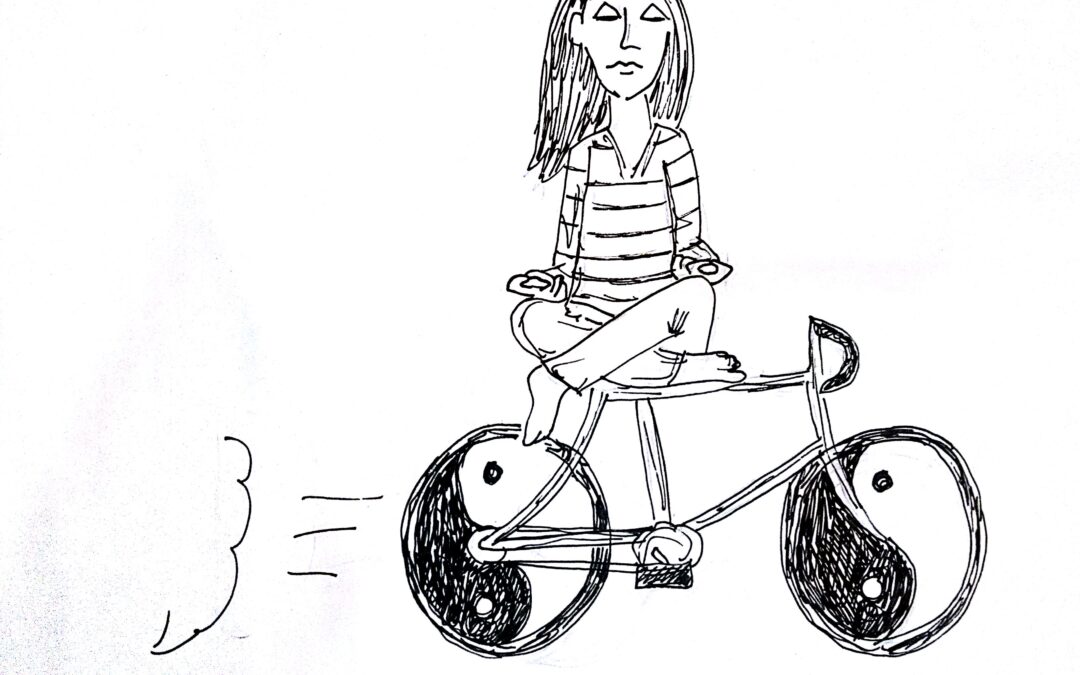
by Dr. Talia Marcheggiani, ND | Mar 14, 2016 | Asian Medicine, Balance, Creativity, Culture, Happiness, Health, Meditation, Mental Health, Mind Body Medicine, Mindfulness, Naturopathic Philosophy, Philosophy, Psychology, Stress
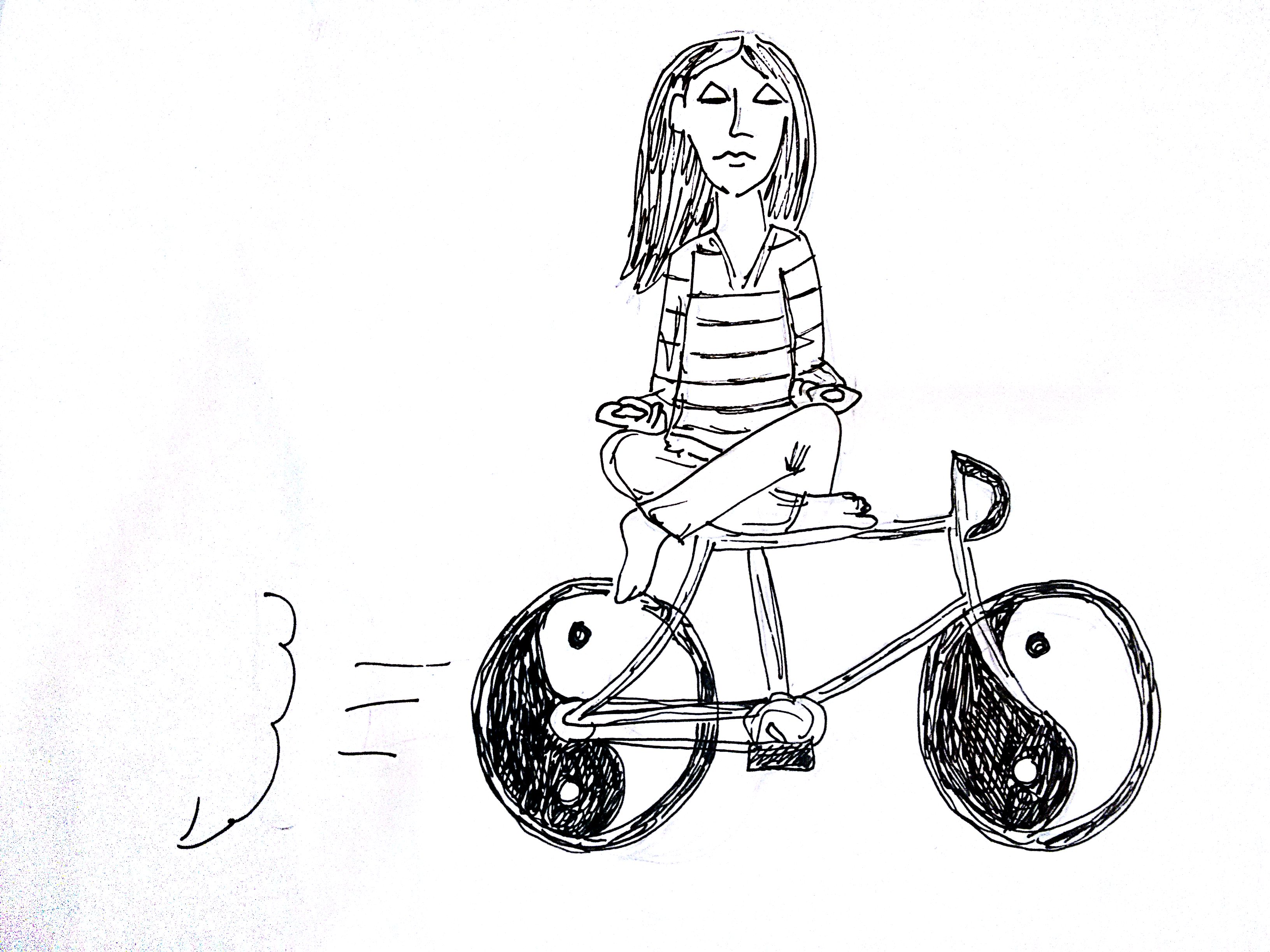 When a successful person is asked to share the secrets of his or her success, the unanimous response is that success requires “effort” and “hard work”. Other popular euphemisms are that success demands “sweat, blood and tears” or “1% inspiration, 99% perspiration”. In grade school we’re lectured on working harder and reprimanded for not trying hard enough. Put in the time and effort to get the grades that will land you the job that will require similar or increasing levels of time and effort. Olympic athletes are lauded as modern-day heroes for their early mornings, punishing workouts and restricted diets. Our society reveres those who put in 80-hour work weeks, despite their implausibility, as we all need to sleep, eat and defecate, which take up hours that are obviously not spent working. It’s a shame to some that we’re limited by these earthly, time-consuming bodies that have been the disdain of capitalism since it’s inception. I see more youth in my practice, who are already bearing the weight of society’s expectations. They are working hard, as instructed, and this “hard work” is taking a physical, mental and emotional toll on their lives. But what can they do? Success requires effort, goes the mantra of our times.
When a successful person is asked to share the secrets of his or her success, the unanimous response is that success requires “effort” and “hard work”. Other popular euphemisms are that success demands “sweat, blood and tears” or “1% inspiration, 99% perspiration”. In grade school we’re lectured on working harder and reprimanded for not trying hard enough. Put in the time and effort to get the grades that will land you the job that will require similar or increasing levels of time and effort. Olympic athletes are lauded as modern-day heroes for their early mornings, punishing workouts and restricted diets. Our society reveres those who put in 80-hour work weeks, despite their implausibility, as we all need to sleep, eat and defecate, which take up hours that are obviously not spent working. It’s a shame to some that we’re limited by these earthly, time-consuming bodies that have been the disdain of capitalism since it’s inception. I see more youth in my practice, who are already bearing the weight of society’s expectations. They are working hard, as instructed, and this “hard work” is taking a physical, mental and emotional toll on their lives. But what can they do? Success requires effort, goes the mantra of our times.
This effort shows up on faces and in bodies. Our minds exhaust us with chastising inner talk; teeth clench, jaws grind and shoulders hunch around ears, creating a new neck-less species, The Hard Worker, inhabiting the earth in increasing numbers.
70% of people today admit to being under stress. When I asked my patients if they feel “stressed”, many shrug, deny or tell me their stress is nothing that they can’t handle, and then proceed to rank their stress levels as 6 out of 10 or higher, 10 being a hair-pulling, crazy-eyed, stressed-out-of-their-wits state—I find it significant that being more than halfway to our limits still qualifies us as not being stressed.
It’s likely that admitting to stress and overwhelm is a weakness in our effort-driven society. If the bodies we inhabit fail to perform, we’ll be replaced by someone more able-bodied, or someone more able or willing to push their limits and sacrifice their health for short-term success—or maybe a machine. Machines don’t need paid vacation or sick leave. While the future seems bleak, it certainly helps with the healing business, as 75-90% of doctor’s visits are either directly or indirectly stress-related. We know that stress has the power to wreck havoc on the body, contributing to diseases, inflammation, decreased immunity, proliferation of cancer and premature aging. We know that stress is implicated in the rising incidence of mental health conditions. We know that things can’t go on as they are, the system is simply not working.
And so when modern society is failing us, it helps to turn to ancient ideas, before it all went wrong, such as Taoist philosophy, to look for answers. The Taoist principles of wu wei, or “effortless action”, tell us that action does not always originate from effort and stress. Effective actions, like creativity and good ideas, can occur spontaneously and of their own accord.
In a society where relentless growth and production are imperative for the survival of the economy, it’s hard to image any action in the absence of sheer effort. Incessant production can’t rely on the eb and flow cycles of natural inspiration and creativity to dictate when, how much or how hard we work. And yet, this perhaps says more about the societal necessities of the work available to us, and our enjoyment (or lack thereof) of such work, than it does about human inspiration. I’ve been planning this blogpost for a while and although it might have been written sooner if set to a deadline, I’ve eventually gotten around to it; here it is. It is a fact that when things need to get done, they will. The doing might happen later than we’d like it to, and yet it still happens, inspired by a genuine desire or necessity, rather than pressure-cooker of stress.
I’m often asked, as a doctor, to help support my patients’ bodies in periods of intense stress—”periods” that have gone on for years with no apparent end in sight. While there are several remedies that can help the body recuperate from the wear and tear of effort or help the adrenal glands secrete more cortisol to continue producing more and faster, there’s also only so much that can be squeezed out of tired organs. Oftentimes, as I’ve written before, the path to healing is paved with introspection and a serious reconsideration of lifestyle. Can we continue to produce and strive at our current rates and still expect to feel fit, healthy and energized? We can build faster computers and smarter phones but our bodies are very much limited to the tools nature has slowly evolved over time, including the natural medicines available to us. Perhaps our lifestyles, like the economy and the stress on the environment, are simply unsustainable. Perhaps it’s time to question how many of the activities in our lives are worth the effort.
While it may not be possible to quit our jobs, pack up and move to the Bahamas, perhaps there are small nooks in our routines where wu wei might fit and flourish. It may be possible to ease up on our own expectations of ourselves, or give up some of our conventional ideas of success. After all, is the journey to success worth slogging if we won’t be happy or healthy when we get there? Finding space in our lives to allow action to arise spontaneously may be crucial in doing the necessary, healing work of stress-management.
Applying wu wei might mean examining the intentions behind our actions and our current lifestyles. Here are some questions to ask yourself.
- When is effort appropriate and when is it wasted?
- Where am I trying to get to? What is my definition of success?
- Is there a day/afternoon/hour in my week when I can “schedule” unscheduled time?
- Are there tasks I can ease up on, laundry for instance, that I can trust will get done on their own time?
- Can I agree to forgive myself when I fail to meet deadlines or choose to take a day off?
- What would it feel like to stop paddling and let the current carry me for a while? Can I do this at work? At home?
- In what area of my life could I allow myself a little more room to breathe?
- What are my top ten values in life? What goals align with those values? What actions would help me move closer to those goals? How much does thinking of those actions excite or inspire me?
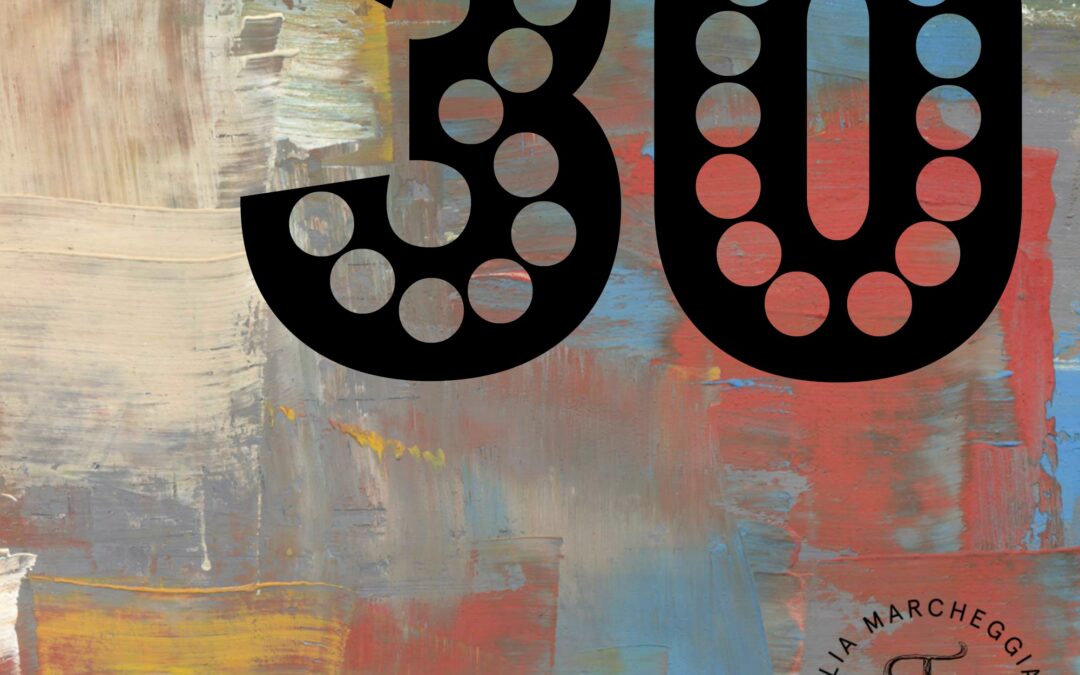
by Dr. Talia Marcheggiani, ND | Feb 23, 2016 | Art, Art Therapy, Balance, Culture, Digestion, Docere, Education, Emotions, Finding yourself, Happiness, Healing Stories, Health, Letting Go, Lifestyle, Listening, Love, Medicine, Meditation, Mental Health, Mind Body Medicine, Mindfulness, Naturopathic Philosophy, Naturopathic Principles, Patience, Philosophy, Psychology, Reflections, Self-care, Self-reflection
 Today, I’m 30, working on my career as a self-employed health professional and a small business owner and living on my own. I’ve moved through a lot of states, emotions and life experiences this year, which has been appropriate for closing the chapter on my 20’s and moving into a new decade of life. I’ve experienced huge changes in the past year and significant personal growth thanks to the work I’ve been blessed to do and the people who have impacted me throughout the last 30 years. Here are 30 things this past year has taught me.
Today, I’m 30, working on my career as a self-employed health professional and a small business owner and living on my own. I’ve moved through a lot of states, emotions and life experiences this year, which has been appropriate for closing the chapter on my 20’s and moving into a new decade of life. I’ve experienced huge changes in the past year and significant personal growth thanks to the work I’ve been blessed to do and the people who have impacted me throughout the last 30 years. Here are 30 things this past year has taught me.
- Take care of your gut and it will take care of you. It will also eliminate the need for painkillers, antidepressants, skincare products, creams, many cosmetic surgeries, shampoo and a myriad of supplements and products.
- Trying too hard might not be the recipe for success. In Taoism, the art of wu wei, or separating action from effort might be key in moving forward with your goals and enjoying life; You’re not falling behind in life. Additionally, Facebook, the scale and your wallet are horrible measures to gauge how you’re doing in life. Find other measures.
- If you have a chance to, start your own business. Building a business forces you to build independence, autonomy, self-confidence, healthy boundaries, a stronger ego, humility and character, presence, guts and strength, among other things. It asks you to define yourself, write your own life story, rewrite your own success story and create a thorough and authentic understanding of what “success” means to you. Creating your own career allows you to create your own schedule, philosophy for living and, essentially, your own life.
- There is such as thing as being ready. You can push people to do what you want, but if they’re not ready, it’s best to send them on their way, wherever their “way” may be. Respecting readiness and lack thereof in others has helped me overcome a lot of psychological hurdles and avoid taking rejection personally. It’s helped me accept the fact that we’re all on our own paths and recognize my limitations as a healer and friend.
- Letting go is one of the most important life skills for happiness. So is learning to say no.
- The law of F$%3 Yes or No is a great rule to follow, especially if you’re ambivalent about an impending choice. Not a F— Yes? Then, no. Saying no might make you feel guilty, but when the choice is between feeling guilty and feeling resentment, choose guilt every time. Feeling guilty is the first sign that you’re taking care of yourself.
- Patience is necessary. Be patient for your patients.
- Things may come and things may go, including various stressors and health challenges, but I will probably always need to take B-vitamins, magnesium and fish oil daily.
- Quick fixes work temporarily, but whatever was originally broken tends to break again. This goes for diets, exercise regimes, intense meditation practices, etc. Slow and steady may be less glamorous and dramatic, but it’s the only real way to change and the only way to heal.
- When in doubt, read. The best teachers and some of the best friends are books. Through books we can access the deepest insights humanity has ever seen.
- If the benefits don’t outweigh the sacrifice, you’ll never give up dairy, coffee, wine, sugar and bread for the long term. That’s probably perfectly ok. Let it go.
- Patients trust you and then they heal themselves. You learn to trust yourself, and then your patients heal. Developing self-trust is the best continuing education endeavour you can do as a doctor.
- Self-care is not selfish. In fact, it is the single most powerful tool you have for transforming the world.
- Why would anyone want to anything other than a healer or an artist?
- Getting rid of excess things can be far more healing than retail therapy. Tidying up can in fact be magical and life-changing.
- It is probably impossible to be truly healthy without some form of mindfulness or meditation in this day and age.
- As Virginia Woolf once wrote, every woman needs a Room of Own’s Own. Spending time alone, with yourself, in nature is when true happiness can manifest. Living alone is a wonderful skill most women should have—we tend to outlive the men in our lives, for one thing. And then we’re left with ourselves in the end anyways.
- The inner self is like a garden. We can plant the seeds and nurture the soil, but we can’t force the garden to grow any faster. Nurture your garden of self-love, knowledge, intuition, business success, and have faith that you’ll have a beautiful, full garden come spring.
- Be cheap when it comes to spending money on everything, except when it comes to food, travel and education. Splurge on those things, if you can.
- Your body is amazing. Every day it spends thousands of units of energy on keeping you alive, active and healthy. Treat it well and, please, only say the nicest things to it. It can hear you.
- If you’re in a job or life where you’re happy “making time go by quickly”, maybe you should think of making a change. There is only one February 23rd, 2016. Be grateful for time creeping by slowly. When you can, savour the seconds.
- Do no harm is a complicated doctrine to truly follow. It helps to start with yourself.
- Drink water. Tired? Sore? Poor digestion? Weight gain? Hungry? Feeling empty? Generally feeling off? Start with drinking water.
- Do what you love and you’ll never have to work a day in your life. As long as what you love requires no board exams, marketing, emailing, faxing, charting, and paying exorbitant fees. But, since most careers have at least some of those things, it’s still probably still preferable to be doing something you love.
- Not sure what to do? Pause, count to 7, breathe. As a good friend and colleague recently wrote to me, “I was doing some deep breathing yesterday and I felt so good.” Amen to that.
- As it turns out, joining a group of women to paint, eat chocolate and drink wine every Wednesday for two months can be an effective form of “marketing”. Who knew?
- “Everyone you meet is a teacher”, is a great way to look at online dating, friendships and patient experiences. Our relationships are the sharpest mirrors through which we can look at ourselves. Let’s use them and look closely.
- Being in a state of curiosity is one of the most healing states to be in. When we look with curiosity, we are unable to feel judgment, anxiety, or obsess about control. Curiosity is the gateway to empathy and connection.
- Aiming to be liked by everyone prevents us from feeling truly connected to the people around us. The more we show up as our flawed, messy, sometimes obnoxious selves, the fewer people might like us. However, the ones who stick around happen to love the hot, obnoxious mess they see. As your social circle tightens, it will also strengthen.
- If everyone is faking it until they make it, then is everyone who’s “made” it really faking it? These are the things I wonder while I lie awake at night.
Happy Birthday to me and happy February 23rd, 2016 to all of you!
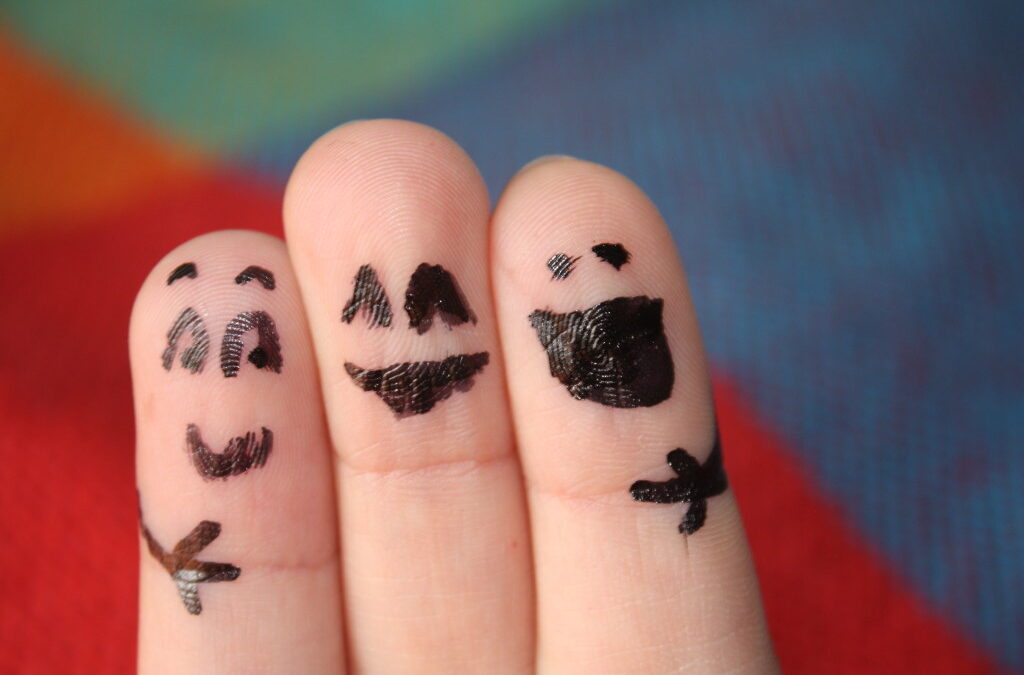
by Dr. Talia Marcheggiani, ND | Feb 16, 2015 | Culture, Emotions, Empathy, Gratitude, Love, Meditation, Mental Health, Mind Body Medicine, Mindfulness, Philosophy, Relationships, Self-care
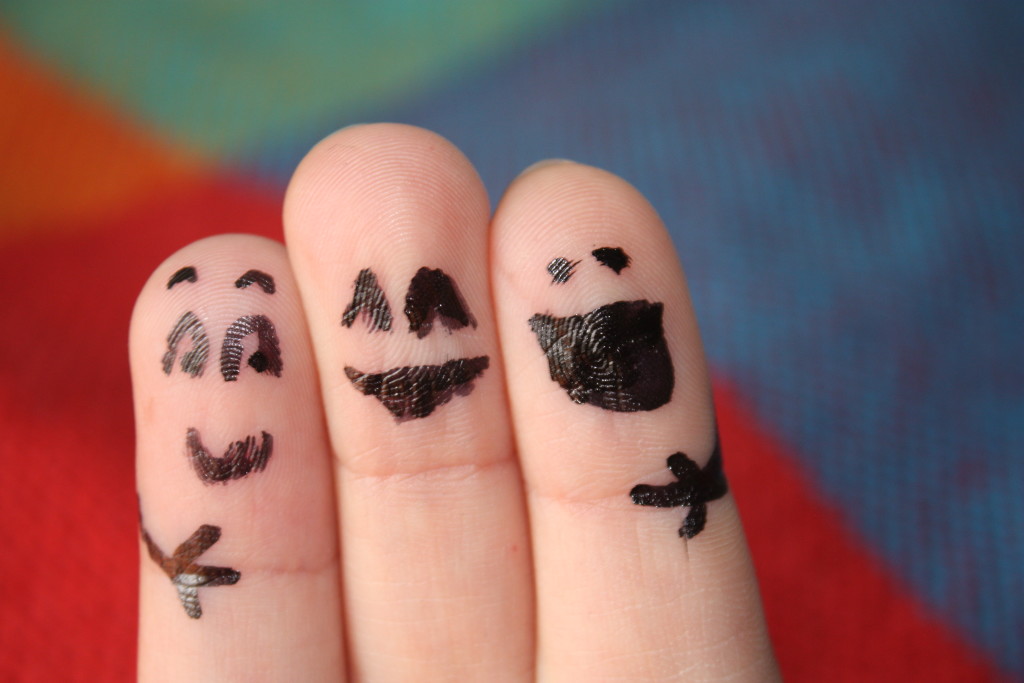 I was in an emotional crisis. My partner and I were fighting. It was my fault and the anxiety I endured from the confrontation was compounded by a deep sense of guilt and shame. I felt powerless as I waited for him to reach out to me so we could fix the problem while at the same time dreading the future confrontation we’d have. I felt isolated. My nerves were shot.
I was in an emotional crisis. My partner and I were fighting. It was my fault and the anxiety I endured from the confrontation was compounded by a deep sense of guilt and shame. I felt powerless as I waited for him to reach out to me so we could fix the problem while at the same time dreading the future confrontation we’d have. I felt isolated. My nerves were shot.
I texted the problem to my friend, A, the psychotherapist, while sitting on the couch in my pyjamas. At the time I remember wanting to include others in my misery, so that people would ask me about it and tell me everything would be alright, that it happens to all of us—it wasn’t that bad—and that I’d get through this thing.
A tells me, “There is nothing you can do now but wait. Waiting takes courage. So, while you’re waiting, don’t forget to self care.”
Self-care: the illusive term we’d often hear tossed around in naturopathic medical school. The hyphenated compound noun referred to anything from applying castor oil packs to getting enough sleep. In my mind, it brings up images of spa-like indulgences: bubble baths, candles, a junky novel—guilty pleasures. True self-care, however, is far from simple self-indulgences. Audre Lorde owns the most powerful definition of self-care I’ve heard, which is this:
“Caring for myself is not self-indulgence, it is self-preservation. And that is an act of political warfare.”
Rather than being a commercial phenomenon—involving trips to the spa, chocolate binge-eating and shopping sprees—self-care is political. Self-care challenges the inequality and oppression of race, gender, class and sexual orientation in society, by providing us with a means to improve our strength and ensure our survival.
When I read Lorde’s quote, I think of my Italian grandmother Nonna. Barely sitting down to enjoy the dinner she had prepared, she dedicated herself to the service of her family’s well-being. Like many other women, especially Italian Catholic women from her generation, she had been taught that any care for herself was selfishness—a symbol of the highest level of vanity and self-obsession. Nonna, like other women of various colours, religions and socioeconomic statuses, was taught to live a life of self-sacrifice. Any attention paid to her own well-being was regarded as an indulgent after-thought. Women are denied a societal sense of self-worth, which is then paradoxically medicated by advertisers telling us to “treat ourselves” to expensive perks because we’ve “earned it”. We are taught not to love ourselves and then instructed how to remedy this lack of self-love with expensive gifts.
Self-care is about finding ways to cultivate and feel deserving of self-love.
True self-care is essential for moving us forward. Because it prioritizes the health and well-being of a person, it affirms self-worth. This has the power to challenge the oppressive forces of racism, misogyny, classism, homophobia and other prejudices. Self-care helps with trauma recovery. It helps heal.
Self-care builds resilience.
We commonly fall into the thought-trap of regarding self-care inaccessible to certain populations; we assume it requires time, money and energy that not all of us have. Katherine from “I Am Begging My Mother Not to Read This Blog” accurately expresses the sentiment with an ironic twist:
“Make time for yourself. After you’ve run that 5K, started a load of laundry, harvested your organic vegetable garden, run to the bank, paid the bills, dazzled everyone with recipes that are cost-effective, healthy, and delicious, thought of something witty and clever to share with your social networking site, caught up on current events and politics, and cleaned all of the house, that special hour set aside just for you is so critical to your well-being.”
While she certainly has a point, something essential is missed in the definition of self-care. Self-care isn’t about shutting out the sound of your screaming children while you pour yourself a martini and fill the tub with hot water. Self-care is about intention, balance, mindfulness, self-awareness and, above all self-love. It is about taking responsibility for one’s own health and well-being. It is about recognizing your physical, mental and emotional needs and ensuring that those needs are met. Self-care is about reducing stress levels. If a pile of dirty laundry is stressing you out, then mindfully washing those clothes while watching the stress leave your body is self-care.
Self-care is an attitude. You can wash your dirty laundry with the frenzy of a thousand cortisol molecules and your mind on the massive list of other things yet to get done, or you can savour the positive feelings of achievement that comes from checking an item off the to-do list. You can breathe the scent of fabric softener, feel the warmth of the clothes that are coming out of the dryer and acknowledge that you are caring for yourself by ensuring you have clean clothes to wear the next day. It’s perspective and intention that creates self-care. That being said, laundry doesn’t necessarily have to be your thing either.
I have a patient who works 6-day weeks. When I asked her what she does for self-care, she looked at me, puzzled. “You know, self-care—how do you take care of yourself?” I tried to clarify. There was still no dawning of realization on her face. I silently chided myself for asking such an insensitive question.
And yet, my patient was taking care of herself. She was drinking more water, eating more vegetables and exercising. She was coming to see a naturopathic doctor and investing in her health. She was doing plenty of self-care; she just didn’t know it.
The SCaR Foundation outlines the BACE method of self-care, which helps us draw awareness to the simple acts we can engage in to care for ourselves.
Body Care involves exercising regularly, eating healthy food, taking medications and herbal supplements as prescribed. It also encompasses getting up to stretch while sitting at a desk, drinking water, getting enough sleep.
Achievement consists of finishing the daily tasks you have on your to-do list, laundry among them. It also includes working towards goals, like studying for a test or doing your work.
Connecting with Others includes spending time with friends, family, or a pet. Social connection is one of the reasons why we’re alive. Being able to reach out to others for help is one of the strongest manifestations of courage and resilience.
Enjoyment encompasses hobbies, favourite pass-times and indulgences. What activities bring joy and happiness to your life?
Self-care should not be pre-determined. When it becomes someone else’s prescription, it is no longer self-care.
Self-care is not always pleasurable. Sometimes it can be quite uncomfortable, such as making the decision to change careers, end a relationship or get in shape. It can be transformative, such as standing up for yourself. Self-love is a revolutionary act and revolutions aren’t always won peacefully. However, learning to listen to the body allows us to determine which decisions are coming from a place of self-love and not anger, hatred or fear.
My particular self-care story ended well. The very act of reaching out to a friend had already begun the process of self-caring (connection). After talking to A, I got up, changed out of my bathrobe, exercised, showered, and put on a homemade face mask of yogurt, honey and avocado (body care). I read fiction on the couch with a hot mug of cinnamon tea (enjoyment). I did yoga, meditated (body care) and went to a friend’s house for lunch, then another friend’s for dinner (connection). I took a course on a subject I love and met other healthcare practitioners while developing a new counselling skill (achievement). A part of me craved isolation, but I intuited that wouldn’t be a restorative act for me at that time and so I forced myself to move on with my activities, knowing that they would improve my positivity and resilience. In the end, because I took care of myself, I was able to face the situation from a place of strength and compassion for both me and my partner. Self-care helped me move past the shame and connect to the most powerful and loving version of myself.
That was my approach to self-care, because it was what I needed. At that time, I needed to feel healthy, strong and social. I needed to be reminded of who I was. Others in similar situations may decide that they need to grieve alone while watching When Harry Met Sally and devouring wine and popcorn, their faces stained with tears. Self-care is about knowing yourself and recognizing and honouring your needs.
Contrary to what we’ve been told, self-care isn’t selfish. It is the highest expression of connectedness. We can’t take care of others if we are not healthy. And we can’t be healthy without taking care of ourselves.
Self-Care Resources:
Methods-of-Self-Care : Free Ebook
Caring About Self-care : Article
Also, check out this Self-Care Journal, by Rachelle Abellar. It has sections for personal affirmations and action plans for when you’re feeling low. You can buy a copy at lulu.com.

by Dr. Talia Marcheggiani, ND | Dec 17, 2013 | Culture, Family, Health, Meditation, Mindfulness, Stress

It’s been a long time since I’ve been able to slowly ease into the holidays and enjoy it like I did before entering university, decorating the Christmas tree, sipping cinnamon spiced lattes, listening to Christmas music, taking my time with Christmas shopping and baking and acting in a holiday play.
However, for most people, the holidays are still a stressful time. The often commercial, faux-cheeriness of the season masks an underlying anxiety about being in close quarters with family, buying the perfect present, financial difficulties and all the work that must be done to meet the ever-increasing expectations we place upon ourselves at this time of year.
(more…)
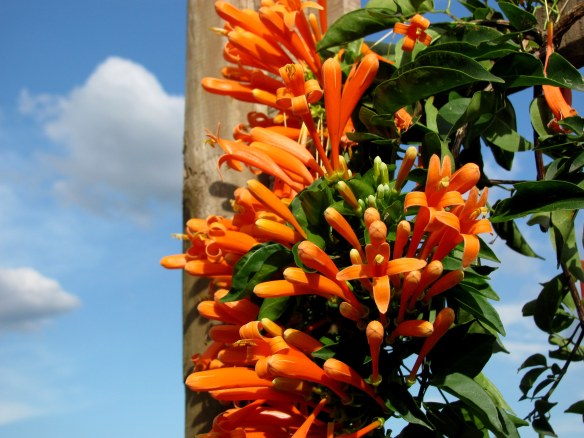
by Dr. Talia Marcheggiani, ND | Oct 22, 2013 | Colombia, Culture, South America, Travel

I have been on hiatus from this blog because I went back to Colombia for vacation. Colombia is a country in which I’ve spent a lot of time in in the past few years, since living there from 2008-2010, and disconnected completely from technology. My smartphone (poor neglected thing) lay buried under dirty laundry at the bottom of my backpack and I removed my watch for the next few weeks, relying on the kindness of neighbours to tell me what time it was, when it mattered enough to ask.
Each time I venture across the Western Hemisphere to return to Colombia, it feels like trying a favourite dish in new ways; the past 11 months of life experience bring out certain flavours that I never noticed before and that add an exquisite richness to the palate of cultural experience. The more times I go, the more it feels like home, as if the culture has nuzzled its way into a part of me and I can never consider myself simply a “Canadian” again. Here are some of the experiences I had that, I believe, can only be found in this loving South American nation.
You know you’re in Colombia when…
(more…)
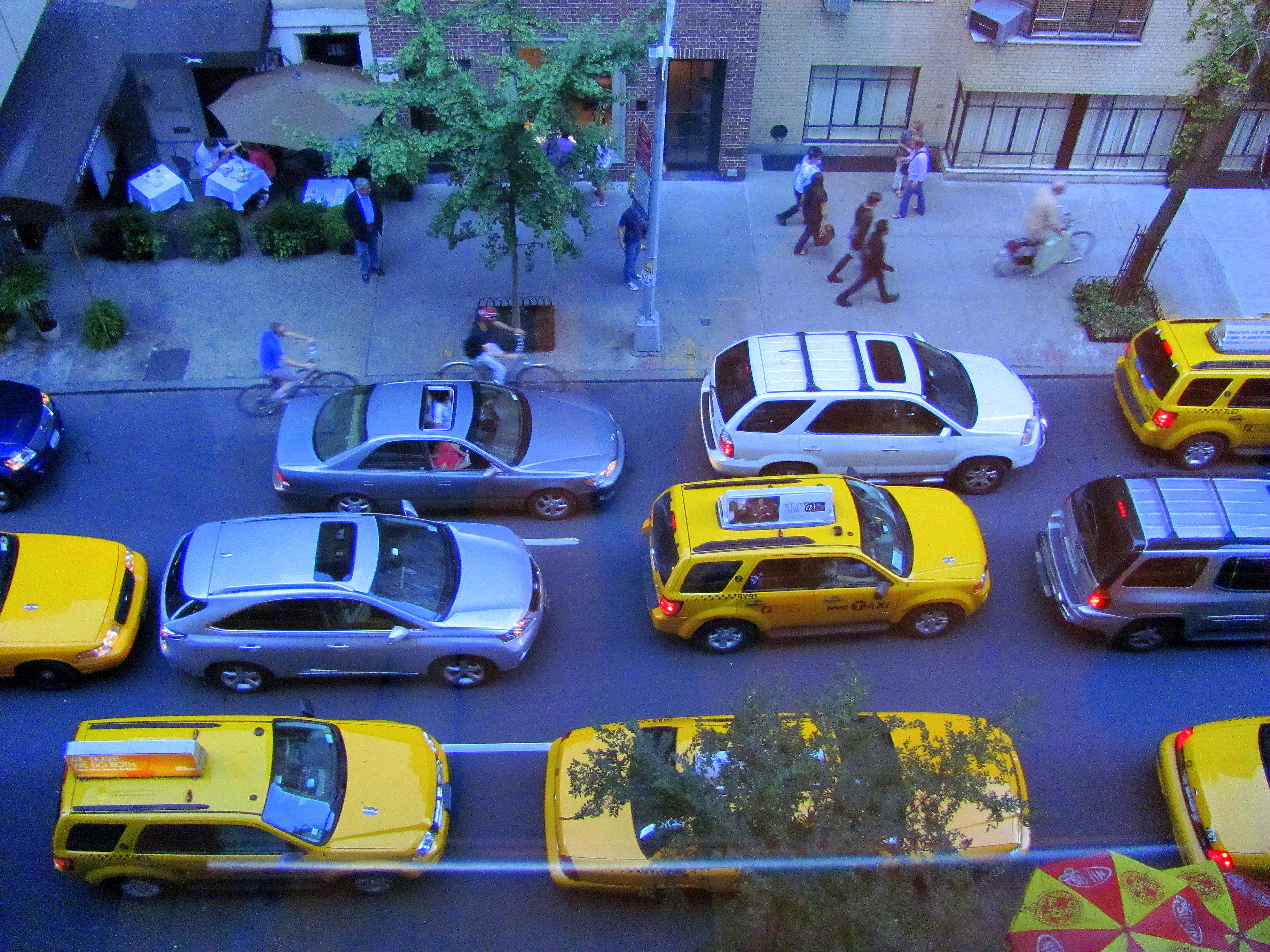
by Dr. Talia Marcheggiani, ND | Jun 13, 2013 | Community, Culture, Exercise, Fitness, Health, Urban Living

Prefer to be stuck in traffic or motoring along on bike or foot? New York City, 2011.
As mentioned, walking is the best form of exercise there is. It allows us to move our bodies organically while interacting with our neighbourhood and the people in it. As you’ve probably noticed, however, some places are more fun to walk around in than others. Taking a stroll down a wide sidewalked street, where you can peer into cafes, interesting boutiques and pass bustling restaurant patios or walking through public parks and in natural settings are clearly more enjoyable walking experiences than walking beside a 6-lane, busy road on a narrow sidewalk in a high-rise neighbourhood. The friendliness of a place to walkers is termed “walkability”, coined by Jane Jacobs, an urban activist and founder of the annual “Jane’s Walks” that take place in various cities around the world in May.
(more…)

by Dr. Talia Marcheggiani, ND | May 16, 2013 | Balance, Community, Culture, DIY, Family, Finding yourself, Happiness, Health, Letting Go, Mental Health, Mindfulness, Nature, Nature Cure, Philosophy, Relationships, Spirituality, Stress

Taganga, Colombia
What does space mean to you? Is it a necessity? A status symbol? A burden?
A friend and I recently went to see a documentary at the Toronto Hot Docs festival called Tiny: A Story About Living Small. The doc follows a young couple who embark on the project of building their own tiny house, measuring roughly 100 square metres, in order to secure their footing in an increasingly growing movement of downsizing living spaces in favour of simplicity.
(more…)
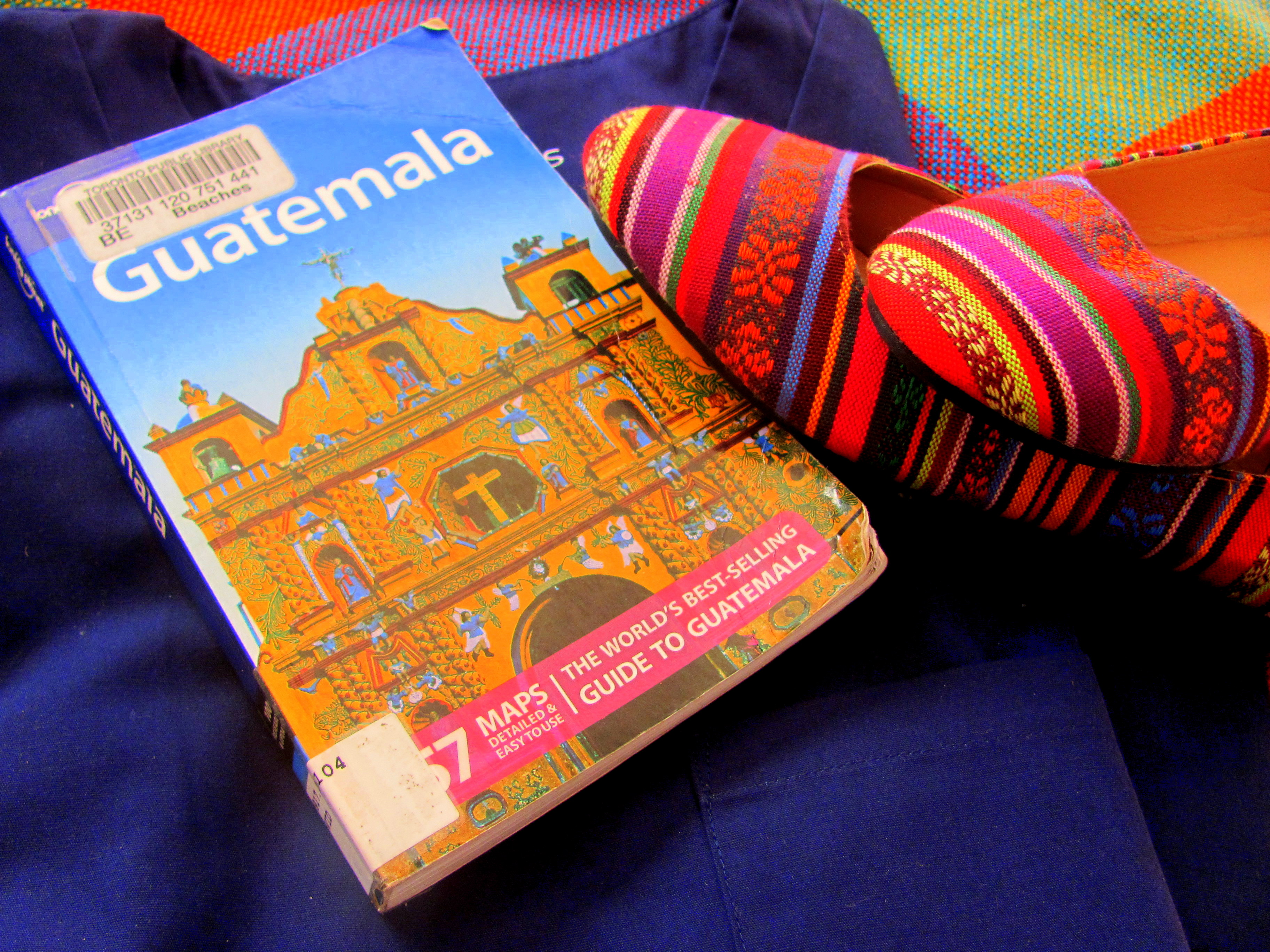
by Dr. Talia Marcheggiani, ND | Feb 13, 2013 | Canadian College of Naturopathic Medicine, Community, Culture, Travel, Volunteering, Volunteering Abroad
My scrubs, stethoscope and 50 pounds of supplements to donate to the Guatemalan clinic are packed and I’m ready to go! Today I’m off for my medical brigade to Guatemala with Naturopathic Medicine for Global Health (NMGH) where a group of students from the Canadian College of Naturopathic Medicine and I will be seeing patients in a free clinic outside of Panajachel that caters to the Mayan community. I’m so excited and grateful to have received this amazing opportunity. Before I leave I want to send a huge THANK YOU to everyone who donated to my cause! I’ll be back on February 24th, the day after my birthday, with (hopefully) some amazing stories and insights from my trip to share. See you all soon!





















